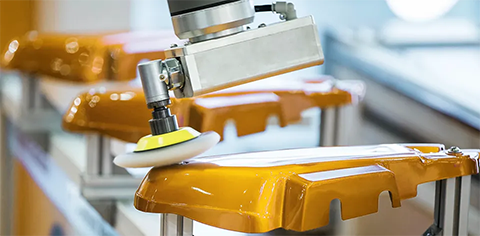 Esperanto
Esperanto
 Shqiptare
Shqiptare
 Euskara
Euskara
 Zulu
Zulu
 Latinus
Latinus
 Cymraeg
Cymraeg
 தமிழ்
தமிழ்
 Slovak
Slovak
 Slovak
Slovak
 Afrikaans
Afrikaans
05
2025
-
10
Which Metal Post-Treatment to Choose? This Article Has You Covered
Metal post-treatment selection depends on core needs: for appearance, choose anodizing (aluminum) or spraying (distinguish indoor/outdoor); for precision parts, prioritize eco-friendly plasma polishing and avoid acid pickling’s corrosion and compliance risks; for performance enhancement, use quenching/tempering (steel) or laser modification (high-end alloys); for special scenarios, apply biocompatible treatment (medical) or electrophoretic coating (automotive). Accurate matching is achieved by combining materials and scenarios.

- Anodizing: The preferred process for aluminum alloys, forming a dense oxide film (5-20μm) that improves corrosion resistance by over 3 times and allows coloring for various effects. The cost for 1 ton of aluminum profiles is approximately 6,000-8,000 yuan. Ordinary anodizing is for indoor decoration, while micro-arc anodizing is recommended for outdoor buildings or electronics, enabling gradient colors and higher hardness.
- Spraying: Includes powder spraying and fluorocarbon spraying. Powder spraying is cost-effective (3,500-5,000 yuan/ton), eco-friendly (solvent-free), suitable for indoor furniture. Fluorocarbon spraying has excellent weather resistance with almost no renovation needed within 20 years; despite the high initial cost (12,000-15,000 yuan/ton), it is preferred for building curtain walls and outdoor art installations.
- Electroplating: Deposits metal layers via electrolysis. Nickel plating enhances decoration, zinc plating focuses on rust prevention, and chrome plating boosts wear resistance. Suitable for hardware accessories and sanitary products, but requires passivation post-treatment to avoid coating bubbles and peeling.
2. Precision Polishing: Pursuit of Ultimate Surface Accuracy
- Plasma Polishing: An eco-friendly alternative to traditional acid pickling. It treats surfaces via high-energy plasma physical bombardment, achieving Ra as low as 0.01μm, and non-contact processing maintains the precision of complex structural parts. Though equipment costs 500,000-2,000,000 yuan, it eliminates waste acid treatment costs, saving 10 times more in long-term operation than acid pickling, making it ideal for precision stainless steel parts.
- Acid Pickling Polishing: Removes oxide layers via strong acid corrosion, with equipment costs only 50,000-200,000 yuan. However, it easily causes excessive metal corrosion (unsuitable for thin-walled or precision parts) and has high environmental governance costs, leading to restrictions in many regions.
- Mechanical Polishing: Physically grinds with grinding wheels or cloth wheels, low-cost but inefficient. Ultrasonic cleaning is needed for complex cavity parts to remove residual abrasives.
3. Performance Enhancement: Optimizing Mechanical and Chemical Properties
- Quenching and Tempering: Core processes for steel performance modification. Quenching (rapid cooling) achieves high hardness, followed by low-temperature tempering (150-250℃) to eliminate stress, reaching hardness above HRC50. Mandatory for gears, bearings, and other transmission components.
- Annealing: Heats metal above critical temperature and cools slowly, reducing hardness by over 30% and eliminating processing stress. Suitable for subsequent processing of castings/forgings or dimensional stabilization of precision parts.
- Laser Surface Modification: Scans high-performance materials (e.g., nickel-based alloys) with laser beams to form a reinforced layer, improving hardness and wear resistance by 2-3 times. Commonly used for aero-engine blades and high-temperature molds.
4. Functional Modification: Meeting Special Scenario Needs
- Biocompatibility Treatment: Titanium alloy medical devices require anodizing combined with hydrothermal treatment to form a hydroxyapatite layer (simulating bone tissue) or chemical etching to create micro-nano structures for enhanced cell adhesion.
- Anti-Corrosion Impregnation: Dips metal parts in anti-rust oil or resin, low-cost and easy to operate, suitable for long-term storage of outdoor parts or mass anti-corrosion of small hardware.
- Electrophoretic Coating: Uses workpieces as electrodes to deposit coatings. Anodic electrophoresis is for automotive paints, cathodic electrophoresis for light metals. With better uniformity than traditional spraying, it is commonly used for car frames.
Key words:
Related news
undefined






